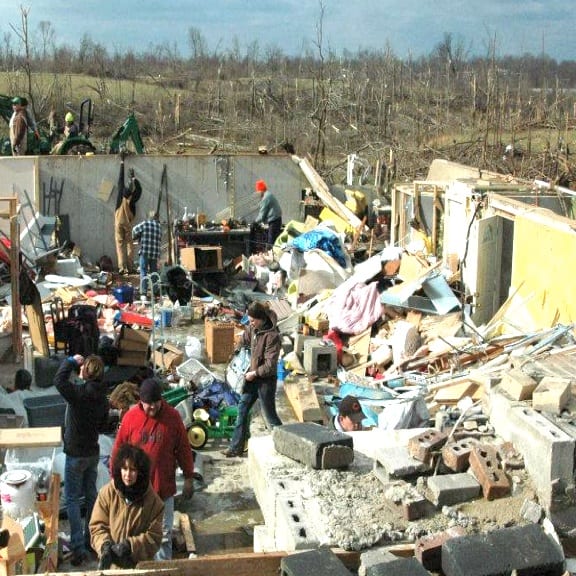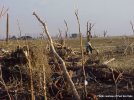I think what differentiates a normal high tornado outbreak from a Super Outbreak is both number of violent tornadoes and number of E/F5s. Both 1974 and 2011 had plenty of each, whereas none of the 3 others listed had an EF5 (officially - I am 100% convinced Bassfield 2020 reached EF5 intensity). The E/F5 one is also the one Palm Sunday 1965 fails, as there are no officially rated F5s for the entire outbreak despite at least 17 violent tornadoes and the presence of slam-dunk, verifiable F5 damage on at least three to five (or more!) tornadoes.
Yeah, Palm Sunday 1965 was absolutely a super outbreak, it just isn't called as much due to the strange conservatism of the ratings for that outbreak in particular. Given the time period, it's especially head-scratching to me that the most violent tornadoes not only didn't receive F5 ratings, but even had a couple that were downgraded for whatever reason from F5 to F4 and even some IIRC that were from F4 to F3. It was very much an 4/27/11 repeat for Ohio, Indiana, Illinois, Michigan, and Wisconsin instead of the deep south (I suppose you could say that 4/27/11 was a 4/11/65 repeat for the south, however). The biggest reason why there were less overall tornadoes in the 1965 outbreak is simply because there's no way we could have known about weaker tornadoes touching down in 1965, especially in the middle of nowhere, radar was in its absolute infancy and we understood a lot less about how tornadoes worked back then.
If the 3/31/23 outbreak had the bulk of its activity occur further to the east and had more of the tornadoes hit populated areas, it probably still wouldn't have been able to achieve a "super outbreak" status, but it would have definitely at least come very close. The Keota tornado and its predecessor, Robinson-Sullivan, and a couple of the lower-rated tornadoes that left ground scouring in open fields but hit nothing else were probably stronger than the ratings they received. Keota had some ridiculous motion and ground scouring, I wouldn't be surprised if it reached EF5 intensity at all. Robinson-Sullivan has been discussed quite extensively on this forum as being deserving of an EF4 rating with the damage it inflicted (I haven't seen the damage myself, so I can't confirm this claim), and there were a handful of tornadoes rated low because they didn't hit anything, but they did leave behind impressive ground swirls and whatnot. Also, the predecessor to Keota was a monster wedge that had ridiculous motion in it too, rated EF3 but likely was stronger at its peak.
There's no doubt that 4/27/11, 4/11/65, and 4/3/74 definitely contained more violent tornadoes than 3/31/23, even when considering the fact that a lot of the 3/31/23 tornadoes hit open fields, so it really just comes down to that. The next super outbreak that occurs is going to be something that becomes evident as it unfolds. The 2023 outbreak, while being extremely impressive in its own right, never struck me as being a potential super outbreak, even while it was occurring. The tornadoes that day only had "the look" in the northern mode, which wasn't a large enough area spacially to verify as a super outbreak by itself, and the southern mode's strongest tornado was the Little Rock EF3 or Wynne EF3 which were both rated very well. On the other hand, the tornadoes from 4/3/74 and 4/27/11 absolutely pretty much all had "the look" to them, regardless of where you were located in the HIGH risk or even in some of the MOD risk. The Philadelphia EF5 being the first tornado of 4/27/11 super outbreak portion was a horrifying indicator of what was to come.
EDIT: When I say "the look" I mean of a tornado being potentially capable of high-end damage, I'm not referring to "the look" of EF5 damage, that's something else. When I say that, I'm simply referring to the presence of horizontal vortices, high rotational velocity, tight velocity couplets that appear quickly after storm formation, and rapid condensing of the funnel that you only typically see in tornadoes on high end days. If you have watched or seen videos of tornadoes on 4/27/11 or 4/3/74, it becomes apparent on what I mean.
Large spacial area affected that contains a high-end parameter space + tornadoes having "the look" throughout the event + discrete/semi-discrete storm mode that maintains itself, with at least 4-5 supercells producing violent, long tracked tornadoes = super outbreak.













































